Highlights from PREP2019 – conference report
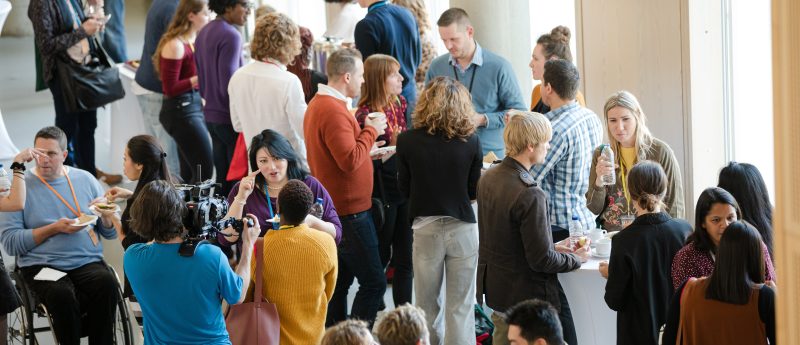
The 32nd International Symposium, Exhibit & Workshops on Preparative and Process Chromatography was held in Baltimore (MD, USA), on July 7–10, 2019 at the Hyatt Regency Inner Harbor. The meeting had the highest attendance recorded in recent years, which is a testament to the ever-growing industrial importance of preparative/process chromatography. The PREP Symposia strive to promote scientific progress, to educate and train and to provide a technology showcase in all areas of preparative and process chromatography. PREP2019 brought together 350 people from 25 different countries (65% US; 83% industry), 28 universities, academic centers and government organizations, 105 companies and 27 exhibitors.
The symposium and exhibit were managed by Janet Cunningham, Barr Enterprises (MD, USA). Two half-day re-conference training workshops, led by teams of experts in the field, were offered: fundamentals of preparative chromatography for biomolecule purification by batch and continuous processes presented by G Carta (University of Virginia, VA, USA), A Jungbauer (BOKU, Vienna, Austria) and M Morbidelli (ETH, Zurich, Switzerland); and fundamentals of preparative chromatography for purification of small and intermediate size APIs by batch chromatography, SMB and SFC presented by G Cox (Consultant) and O Dapremont (Ampac Fine Chemicals; NV, USA).
Two morning tutorials provided more focused instruction on tips, tricks and troubleshooting analytical and overloaded prep chromatography, presented by C Mazza (Nouryon, Amsterdam, Netherlands; Kromasil, Bohus, Sweden) and Q Yan (Pfizer, NY, USA) and practical concepts on process characterization and validation of biopharmaceuticals based on QbD principles presented by G Ferreira (AstraZeneca, Cambridge, UK).
Through the exhibit, the participants got acquainted with the very latest in stationary phases, systems, services and equipment for small, medium and large-scale prep chromatography. Nine vendor workshops complemented the exhibit with extensive coverage of key technologie. The scientific program comprised 71 oral papers including four keynote sessions, four plenaries, eight parallel sessions and 113 posters.
Keynote sessions
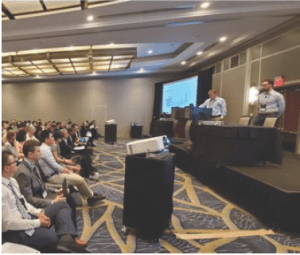 The opening keynote session industrial case studies in protein chromatography, organized and chaired by A Hunter and T Pabst (AstraZeneca, Cambridge, UK), included five talks addressing some of the latest developments in the industrial purification of biopharmaceuticals. H Li (Merck & Co., Inc., NJ, USA) presented a QbD approach to guide product and process development and a tailored control strategy based on risk assessment to understand trade-offs in acceleration scenarios. L Yang (AbbVie, IL, USA) introduced a chromatography-based purification toolbox to address manufacturing challenges for antibody-drug conjugates.
The opening keynote session industrial case studies in protein chromatography, organized and chaired by A Hunter and T Pabst (AstraZeneca, Cambridge, UK), included five talks addressing some of the latest developments in the industrial purification of biopharmaceuticals. H Li (Merck & Co., Inc., NJ, USA) presented a QbD approach to guide product and process development and a tailored control strategy based on risk assessment to understand trade-offs in acceleration scenarios. L Yang (AbbVie, IL, USA) introduced a chromatography-based purification toolbox to address manufacturing challenges for antibody-drug conjugates.
C Thompson (Genentech, CA, USA) presented an overall strategy to reduce and strengthen experimental measurements by using mechanistic modeling within a lean process development paradigm. Next, R Maurer (BMS, NY, USA) described a comprehensive approach to decouple the effects of process conditions and molecular properties in the protein A capture of antibodies. H Luo (AstraZeneca, Cambridge, UK) introduced the phenomenon of liquid-liquid phase separation encountered during mAb processing at high concentrations, also including protein engineering approaches to overcome the associated challenges.
The second keynote session, chaired by Q Yan (Pfizer, NY, USA) and focused on preparative chromatography in drug discovery, development and manufacture, addressed the purification of small and medium size APIs by prep HPLC and SFC. In the opening paper, F Gritti (Waters, MA, USA) addressed the problems associated with mismatches of sample diluent and eluent also providing an in silico approach to select optimum conditions that minimize resolution losses.
J Preston (Phenomenex, CA, USA) provided an overview of pH effects in HPLC showing interesting selectivity reversal behaviors as well as remarkable stability of certain organo-silica phases at high pH. M Przybyciel (ES Industries, NJ, USA) provided a review of the factors affecting the selection of stationary phases for SFC including a recommended core set of SFC columns that can be used to address most separation needs in this area.
In the following paper, T Fornstedt (Karlstad University, Sweden) discussed the HPLC separation of phosphorothioated antisense oligonucleotides, which form diastereoisomers. Mobile phase additives were shown to have profound effects on selectivity.
The final paper in the session, presented by Q Yan (Pfizer, NY, USA), compared the advantages and disadvantages of batch recycling, closed-loop steady state recycling, twin-column recycling and SMB for small-scale prep API purification in terms of development cost, productivity, solvent usage, and capital cost.
The third and fourth keynote sessions addressed continuous chromatography, chaired by S Kandula (Merck & Co., Inc., NJ, USA) and chromatographic purification of peptides and oligonucleotides, chaired by O Dapremont (Ampac Fine Chemicals, NV, USA).
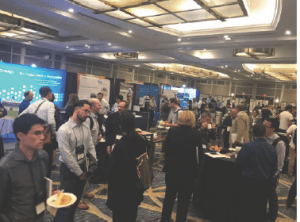 In the first of these keynote sessions, S Vogg (from the Morbidelli group at ETH Zurich, Switzerland) addressed the automated end to end manufacturing of biomolecules by integrating perfusion culture with capture SMB, flow through AEX chromatography and frontal CEX chromatography. According to the presenter, inclusion of at-line analytics with integrated feedforward and feedback control strategies resulted in stable operation with high productivity and enhanced product quality.
In the first of these keynote sessions, S Vogg (from the Morbidelli group at ETH Zurich, Switzerland) addressed the automated end to end manufacturing of biomolecules by integrating perfusion culture with capture SMB, flow through AEX chromatography and frontal CEX chromatography. According to the presenter, inclusion of at-line analytics with integrated feedforward and feedback control strategies resulted in stable operation with high productivity and enhanced product quality.
J Forte (Pall, NY, USA) compared viral clearance obtained in single column systems and in multicolumn continuous chromatography systems for mAb purification. Comparable LRVs were demonstrated for the two systems using bacteriophage PhiX174 as a mimic of mammalian virus. Y Song (BMS) addressed many of the analytical aspects associated with the isolation of charge variants of monoclonal antibodies by continuous chromatography using the multi-column solvent gradient process.
T Santos (from the Mota group at LAQV-REQIMTE NOVA, Lisbon, Portugal) described a flexible 3-column experimental apparatus that can be used to test various 2- and 3-column continuous chromatography processes for peptide purification along with a process model that considers all system components including connecting tubes.
In the final paper of the session, A Kienle (Otto von Guericke University, Magdeburg, Germany) described advanced adaptive cycleto-cycle control strategies for simulated moving bed chromatography for the separation of enantiomers. The control framework presented was shown to maintain a remarkably steady performance against disturbances and rapid response to set-point changes and could be adapted to control integrated processes such as those combining SMB with crystallization or with racemization.
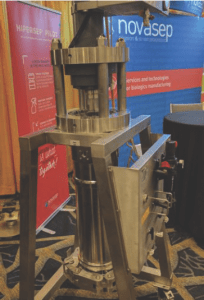 The theme of continuous chromatography was carried on in the last of the four keynote sessions by T Muller-Spath (ChromaCon, now part of YMC, Kyoto, Japan) who addressed the separation of peptides and oligonucleotides using twin-column chromatography for high purity, high-yield, high productivity and low-solvent consumption operation. R Eisenhuth (Bachem AG, Bubendorf, Switzerland) provided an industrial perspective on peptide purification emphasizing connections to the FDA guidance on overall and single impurity levels in peptide drugs as well as the industry’s increasing focus on process mass intensity, which can be quite high (around 5000 kg/kg for some peptides, according to the presenter) and ways in which chromatography can be used to reduce it.
The theme of continuous chromatography was carried on in the last of the four keynote sessions by T Muller-Spath (ChromaCon, now part of YMC, Kyoto, Japan) who addressed the separation of peptides and oligonucleotides using twin-column chromatography for high purity, high-yield, high productivity and low-solvent consumption operation. R Eisenhuth (Bachem AG, Bubendorf, Switzerland) provided an industrial perspective on peptide purification emphasizing connections to the FDA guidance on overall and single impurity levels in peptide drugs as well as the industry’s increasing focus on process mass intensity, which can be quite high (around 5000 kg/kg for some peptides, according to the presenter) and ways in which chromatography can be used to reduce it.
In the next paper, P O’Shaughnessy (Johnson Matthey Health, London, UK) presented a model-based approach to predict and optimize chromatography in large-scale pharmaceutical manufacturing using ChromWorks software. The approach requires the definition of a physical model, simulation, prediction and iteration for parameter optimization. T Fornstedt (Karlstadt University, Sweden) followed on discussing the critical aspects of solubility and process robustness that affect the chromatographic purification of peptides by supercritical fluid chromatography. According to the presenter, separation in gradient elution mode can result in improved reproducibility and method transfer between facilities.
In the final paper, F Limé (Nouryon/Kromasil, Sweden) addressed important issues arising during the chromatographic separation of peptides by RP-HPLC including the phenomenon of ‘fibril’ formation and aggregation/adsorption on the stationary phase resulting in two peak elution. The presenter underscored the importance of shear forces during sample preparation and handling of product fractions.
Plenary sessions
The four plenary sessions were dedicated to innovative stationary phases and processes (chaired by L Beaver, LAB Enterprises), fundamentals applied to understand chromatography columns (chaired by C Wang, AbbVie, IL, USA), monoliths and membrane chromatography (co-chaired by graduate students S Vogg, ETH Zurich, and Y Wang, University of Virginia) and applications of chromatography to virus, VLPs, and plasmid purification (chaired by A Podgornik, COBIK, Ljubljana, Slovenia).
In the first of these sessions, M Hearn (Monash University, Melbourne, Australia) reported on novel stationary phases for protein purification based on smart, stimuli responsive polymers whose adsorption properties can be controlled by temperature, pH, electric fields, light, ultrasound etc. According to the presenter, an inherent advantage is the low consumption of chemicals that makes these materials especially suitable for very-large scale, low cost protein recovery. The presenter illustrated the thermodynamic basis for these separations also covering a number of exciting applications outside mainstream separations.
“S Berensmeier (Technical University of Munich, Germany) continued the session by presenting a paper with the tantalizing title ‘Did you know that magnetic separation for proteins does not have to be expensive?'”
S Menegatti (North Carolina State University, NC, USA) presented advances made in the discovery and development of peptide-based ligands for the selective binding of host-cell proteins during flow through purification of monoclonal antibodies. The goal is to develop ligand sets that can bind broad ranges of host-cell proteins. While several problems still need to be addressed, the initial results are promising, potentially paving the way toward a single-phase continuous mAb purification process.
C Bilodeau (from the Cramer group at RPI, Troy, NY, USA) focused on the development of a so-called product-agnostic strategy to develop a small set of highly selective and orthogonal stationary phases that is capable of addressing most protein separations. The presenter introduced separability and orthogonality metrics which have implications not only for selecting among existing resins but also for developing the next generation of highly orthogonal sets of multimodal resins.
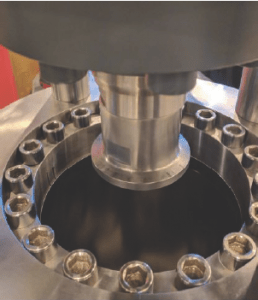 S Berensmeier (Technical University of Munich, Germany) continued the session by presenting a paper with the tantalizing title ‘Did you know that magnetic separation for proteins does not have to be expensive?’ Indeed, the presenter showed that while commercially available magnetic-bead kits are extremely expensive and have low binding capacity, new materials based on Fe2O3 nanoparticles, 5–12 nm in diameter, can be produced at low cost, have high surface areas (up to 100 m2/g) and high protein binding capacity. Use of these materials both in bare form and in functionalized form was demonstrated for different applications including high-gradient magnetic separators.
S Berensmeier (Technical University of Munich, Germany) continued the session by presenting a paper with the tantalizing title ‘Did you know that magnetic separation for proteins does not have to be expensive?’ Indeed, the presenter showed that while commercially available magnetic-bead kits are extremely expensive and have low binding capacity, new materials based on Fe2O3 nanoparticles, 5–12 nm in diameter, can be produced at low cost, have high surface areas (up to 100 m2/g) and high protein binding capacity. Use of these materials both in bare form and in functionalized form was demonstrated for different applications including high-gradient magnetic separators.
In the last paper of this session, U Simon (from the Dimartino group at the University of Edinburgh, Scotland) described advances in the synthesis of 3D printed monoliths with quaternary amine functionality for protein separations. As shown by the presenter, while 3D printed technology is still limited in terms of spatial resolution and size, this pioneering research suggests a future when we no longer pack columns but simply print them, including stationary phase, container, and connectors with geometries that minimize dispersion and pressure and maximize chromatographic efficiency. Current 3D printing technology was shown to already yield performance comparable to that of commercial materials for the separation of model proteins and C-Phycocyanin from crude cell extracts.
In the session on fundamentals applied to understand chromatography columns, O Khanal (from the Lenhoff group at the University of Delaware, DE, USA) illustrated how protein loading conditions can be manipulated to improve chromatographic capture on ion exchange columns taking advantage of the mechanism of surface diffusion. Since, according to the presenter, the surface diffusivity of a mAb is governed by its binding affinity, loading using a gradient with decreasing ionic strength and protein concentration results in better capacity utilization. In the next paper, Siddarth Parasnavis (from the Cramer group at RPI) presented a study aimed at determining the domain contributions to binding of bispecific antibodies and their associated impurities to multimodal HIC and CEX resins. Using the parent mAbs as a model, the presenter indicated that while HIC and monomodal CEX resins showed little or no resolution, significant selectivity was observed using multimodal CEX resins. Analysis of the protein surface properties was shown to provide insight. In the next paper, D Antos (Rzeszow University, Poland) presented a detailed quantification of protein unfolding on CEX resins using fluorescence measurements for the bound protein to determine, in situ, changes in melting temperature. Destabilization of the bound protein was shown to depend on pH and incubation time. A mechanistic kinetic model was proposed.
The next paper, presented by Anna Christler (from the Jungbauer group at BOKU, Austria) provided a change of pace with a study focused on improving column models by allowing for radial heterogeneity and extracolumn dispersion via CFD simulation. According to the presenter, 2D simulations predicted greater dispersion than 1D models resulting in a more realistic description of column performance, especially for small columns. The final paper in the session by A Rehm (Rentschler Biopharma, Laupheim, Germany) analyzed data for a large number of stationary phases in columns of various sizes with the goal of developing standardized procedures for column packing and testing. Guidelines were provided with regards to packing pressure, packing buffer, duration of settling and test conditions that simplify packing and testing of columns used in bioprocessing.
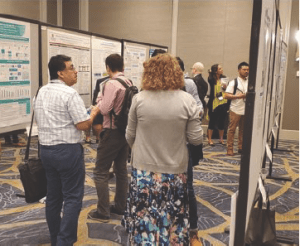 The next plenary on monoliths and membrane chromatography included five papers dealing with a variety of structures and applications. T Kubo (Kyoto University, Japan) introduced macroporous “sponge monoliths” functionalized with different ligands for applications in protein chromatography. Protein A monoliths were shown to be useful for quantitating IgG, while lectin functionalized monoliths (ConA, SSA) were shown to be effective for quantifying glycoproteins as well as mannose-liposomes. In the next paper, M Rito-Palomares (Monterrey Institute of Technology, Neuvo Leon, Mexico) described a number of potential uses of monoliths for the purification of large bioparticles in medical applications including the purification of CD133+ stem cells.
The next plenary on monoliths and membrane chromatography included five papers dealing with a variety of structures and applications. T Kubo (Kyoto University, Japan) introduced macroporous “sponge monoliths” functionalized with different ligands for applications in protein chromatography. Protein A monoliths were shown to be useful for quantitating IgG, while lectin functionalized monoliths (ConA, SSA) were shown to be effective for quantifying glycoproteins as well as mannose-liposomes. In the next paper, M Rito-Palomares (Monterrey Institute of Technology, Neuvo Leon, Mexico) described a number of potential uses of monoliths for the purification of large bioparticles in medical applications including the purification of CD133+ stem cells.
A Podgornik (University of Ljubljana, Slovenia) introduced a creative and effective way of simplifying analysis of fractions obtained from frontal loading experiments by integrating a preparative test column with an analytical monolithic column within a single chromatography workstation. Accordingly, no fractions need to be collected as the effluent from the test column is periodically directed to the analytical column.
In the next paper, K Haskins (JSR Life Sciences, CA, USA) described new cassette-type systems where the stationary phase in a particle form is packed in a 3D printed device containing a lattice support structure. The arrangement results in lower operating pressures than conventional columns with linear pressure-flow curves at velocities up to 1600 cm/h. Scale up to 1L volume was shown with four stacked cassettes. In the final paper of the session, C Koehler (3M, Loughborough, UK) introduced hybrid membranes containing AEX ligands and their use prior to protein A capture of IgG. According to the presenter, the hybrid adsorptive membrane reduced DNA and HCP levels in the protein A eluate and prevented discoloration of the protein A resin.
The final plenary, devoted to applications to the purification of virus, VLPs, and plasmids, began with a talk presented by D Ta (A*STAR, Singapore) on a two step process to purify H1N1 virus using ion exchange resins. The effects of loading and elution conditions on yield, purity and virus integrity were studied. In the following paper, C Voss (Bio- Rad Laboratories, CA, USA) showed the application of chromatographic resins to the purification of plasmid DNA for gene therapy and genetic vaccination. Using a large-pore anion exchanger in conjunction with mixed-mode resins, the presenter demonstrated the removal of typical impurities found in plasmid DNA production with an RNase free purification process.
The next paper, presented by A Hagner-McWhirter (GE Healthcare, IL, USA), described a scalable process for the production of adenovirus from HEK293 suspension cell culture all the way to purified bulk using a combination of anion exchange for capture and core-bead particles for polishing as an alternative to conventional SEC technology. The paper also addressed analytical aspects including quantification of virus titer and infectious virus. Finally, the last paper in the session and also in the symposium was presented by K Saylor (from the Zhang group at Virginia Polytechnic Institute and State University, VA, USA ) and addressed the effects of the recombinant insert of multiepitope tags into protein on modulating anion exchange chromatography.
Parallel Sessions
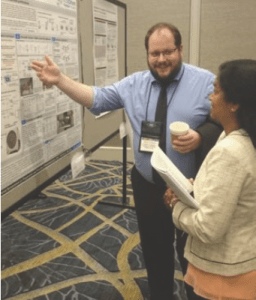 The eight parallel sessions rivaled the keynote and plenary sessions in terms of content and quality but addressed the following more specialized topics in preparative and process chromatography: process modeling I and II; stationary phases I, II and III; alternative chromatographic processes; continuous chromatographic processes; and QbD in biopharmaceutical process development and manufacturing. The poster program, sponsored by Bristol-Myers Squibb and cochaired by M Schmidt (Genentech, CA, USA) and O Thomas (University of Birmingham, UK), comprised a total of 113 posters presented in alternate days and covering a very board range of chromatography problems and solutions for fine chemicals, APIs and biomolecules.
The eight parallel sessions rivaled the keynote and plenary sessions in terms of content and quality but addressed the following more specialized topics in preparative and process chromatography: process modeling I and II; stationary phases I, II and III; alternative chromatographic processes; continuous chromatographic processes; and QbD in biopharmaceutical process development and manufacturing. The poster program, sponsored by Bristol-Myers Squibb and cochaired by M Schmidt (Genentech, CA, USA) and O Thomas (University of Birmingham, UK), comprised a total of 113 posters presented in alternate days and covering a very board range of chromatography problems and solutions for fine chemicals, APIs and biomolecules.
Details on the 2019 parallel and poster sessions can be found here.

 Information for PREP2020 can be found here
Information for PREP2020 can be found here